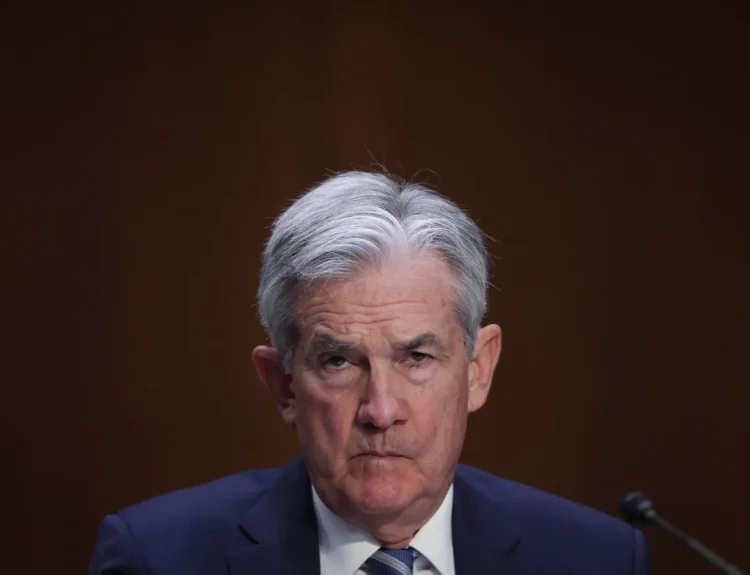Successful investing isn’t just about numbers—it’s about patience, observation, controlling emotions and learning investing strategies. Your biggest enemy in investing is likely yourself – your emotions, biases, and the urge to ‘do something’ when often the best action is no action.
As Warren Buffett wisely says: “The stock market is a device for transferring money from the impatient to the patient.“
Legendary investor Peter Lynch credited his wife with one of his best investment ideas. In the early 1980s, his wife Carolyn came home excited about a new product called Pampers—disposable diapers made by Procter & Gamble.
“Peter, these things are incredible,” she told him. “They save so much time.”
Lynch, who managed Fidelity’s Magellan Fund (the greatest hedge fund of all time), took note but initially did nothing.
Only after Carolyn mentioned it several more times did he research P&G’s financials, discovering a quality company with strong brands, consistent profits, and excellent management.
He built a massive position in P&G, watching it become one of his fund’s best performers.
Later, Lynch would famously advise: “The average person is exposed to interesting local companies and products years before professionals ever hear of them. And the average person can take advantage of these early observations.”
This experience shaped Lynch’s “buy what you know” philosophy—the idea that everyday consumers often spot excellent businesses before Wall Street does, simply by paying attention to products they use and love.
Here are the investment strategies in history by best investors:
1. Why Quality Investing is Important
Quality investing isn’t about finding the cheapest stocks or the fastest-growing companies. It’s about identifying exceptional businesses with strong fundamentals, competitive advantages, and the potential for sustained growth over many years.
When you focus on quality, you’re looking for companies built to last – businesses that can compound your wealth for decades, not just quarters.
The magic behind quality companies—often called compounders—is that they reinvest their profits to grow even more. This approach lets you sit back and watch your investment compound over time.
2. Warren Buffett: The Foundation of Quality Investing
Warren Buffett, arguably the most successful investor of all time, built his $100+ billion fortune by following a simple strategy: find wonderful businesses with durable competitive advantages and hold them long-term.
“It’s far better to buy a wonderful company at a fair price than a fair company at a wonderful price,” Buffett famously stated. This marked his transformation from a pure value investor (taught by Benjamin Graham) to a quality-focused investor.
Buffett’s Key Investing Principles:
- Invest in What You Understand: Buffett calls this your “circle of competence.” Only invest in businesses you truly understand. You don’t need to comprehend every technical aspect, but you should grasp how the company makes money.
- Buy and Hold: Once Buffett buys a quality company, he rarely sells. His famous quote, “Our favorite holding period is forever,” shows his belief in the power of long-term growth.
- Look for Durable Competitive Advantages: Buffett seeks companies with “economic moats” – sustainable advantages that protect profits from competitors. These might include powerful brands, network effects, or unique assets.
- Focus on Quality Management: Trustworthy, competent managers who allocate capital wisely are essential to long-term success.
- Require Strong Returns on Equity: Quality companies consistently generate high returns on the money invested in the business without excessive debt.
Since taking control of Berkshire Hathaway in 1965, Buffett has delivered annual returns of 19.8% compared to the S&P 500’s 9.9%. Over nearly six decades, this difference in performance has created enormous wealth for Berkshire shareholders – a testament to the power of quality investing when practiced with discipline.
3. Peter Lynch: Finding Great Investments in Everyday Life
Peter Lynch, who managed Fidelity’s Magellan Fund from 1977 to 1990, is famous for his “buy what you know” philosophy. During his tenure, Lynch achieved an astonishing 29.2% annual return, turning every $10,000 invested into $280,000 by the time he retired.
Lynch believed that everyday consumers often spot excellent investments before Wall Street does, simply by paying attention to the products they use and love.
Lynch’s Quality Investing Approach:
- Find Businesses with “Easy-to-Understand” Models: Look for companies with straightforward business models.
- Use Your Consumer Knowledge: Pay attention to products and services you enjoy and use.
- Look for Room to Grow: Seek companies with plenty of room to expand their operations.
- Avoid “Hot” Sectors: Stay away from trendy industries where intense competition will erode returns.
- Seek Niche-Dominating Companies: Find businesses that dominate their particular market niche.
Lynch’s brilliance was in recognizing that the products and services people value often represent businesses with exceptional customer loyalty and pricing power – key attributes of compounding machines.
4. Charlie Munger: The Power of Mental Models
Charlie Munger, Buffett’s long-time partner at Berkshire Hathaway, expanded quality investing by emphasizing mental models and “elementary worldly wisdom.”
“All I want to know is where I’m going to die, so I’ll never go there,” Munger quipped, illustrating his inverted thinking approach. Rather than seeking winners, Munger first eliminates businesses prone to failure.
Munger’s Quality Investing Framework:
- Economic Moats: Look for sustainable competitive advantages that protect profits from competitors.
- High Returns on Invested Capital (ROIC): Seek businesses that can reinvest profits at high rates.
- Network Effects: Find companies that become more valuable as more people use them.
- Pricing Power: Identify businesses that can raise prices without losing customers.
- Low Capital Requirements: Look for companies that don’t need constant reinvestment to maintain their position.
Munger’s multi-disciplinary approach helps identify companies with what he calls “functional inevitability“—businesses so entrenched that their continued success is almost certain. When you own such companies, time becomes your ally rather than your enemy.
5. Benjamin Graham: The Father of Value Investing
Benjamin Graham laid the groundwork for many modern investment strategies. His ideas on fundamental analysis and the margin of safety have shaped how investors view quality and risk.
Graham’s Key Investment Tenets:
- Margin of Safety: Only invest when there is a clear discount between a company’s market price and its intrinsic value. This buffer protects you if things go wrong.
- Thorough Analysis: Do deep research and careful analysis of financial statements, looking at earnings, debt, and growth prospects.
- Investor Psychology: Don’t let emotions drive investment decisions. Instead, use a rational, disciplined approach to picking stocks.
Graham’s methods are a cornerstone of quality investing. They teach us that by carefully analyzing a company’s fundamentals, you can invest with confidence and protect your downside.
6. Philip Fisher: Deep Quality Research
Philip Fisher, author of Common Stocks and Uncommon Profits, pioneered the “scuttlebutt method” of conducting thorough qualitative research to identify exceptional businesses.
“I don’t want a lot of good investments; I want a few outstanding ones,” Fisher declared, emphasizing concentration in truly superior companies.
Fisher’s Quality-Focused Approach:
- Superior Management: Look for integrity and quality in company leadership.
- Products Addressing Expanding Markets: Find businesses positioned in growing sectors.
- Commitment to Research and Development: Seek companies that invest in innovation.
- Above-Average Profit Margins: Identify businesses that can earn high returns over time.
- Strong Sales Organizations: Look for companies that excel at marketing and distribution.
Fisher’s methods require deep research beyond financial statements. To truly understand a company’s competitive position, Fisher speaks with customers, suppliers, competitors, and former employees. This thorough approach helps identify hidden qualitative factors that enable decades of compounding.
7. Terry Smith: Simplifying Excellence
Terry Smith, founder of Fundsmith and often referred to as “Britain’s Warren Buffett,” distilled quality investing into a simple framework.
“Buy good companies, don’t pay too much, and do nothing,” Smith advises, capturing the essence of quality investing in a single sentence.
Smith’s Quality Investment Criteria:
- High Returns on Operating Capital: Find businesses that generate strong returns.
- Growth Powered by Reinvestment: Seek companies that can fund their own growth from cash flows.
- Protective Advantages: Look for features that protect returns, such as brands, patents, or dominant market share.
- Resilience to Technological Disruption: Find businesses unlikely to be obsolete soon.
- Capable Management: Seek leaders focused on creating shareholder value.
- Low Debt: Prioritize companies with strong balance sheets.
Smith’s approach emphasizes businesses so exceptional that even average management couldn’t ruin them. These companies generate so much cash they can fund their own growth without diluting shareholders through constant equity raises – creating a virtuous cycle of compounding.
8. The Power of Compounding
The mathematical power behind quality investing becomes clear when we examine compound growth. Consider two investment approaches:
Value Investing: Buy undervalued companies, sell when they reach fair value, and repeat. Assuming 15% annual returns with taxes and transaction costs, your effective compound rate might be 10-12%.
Quality Compounding: Buy exceptional businesses and hold them for decades. Companies that can sustain 15% returns on capital and reinvest most of their earnings might deliver similar 15% annual returns, but without the erosion from taxes and transaction costs.
Over 30 years, a $100,000 investment compounding at:
- 10% becomes approximately $1,744,940
- 15% becomes approximately $6,621,177
This astonishing difference explains why patient quality investors often outperform even skilled traders over long periods. The compounding mathematics work in your favor when you identify and hold truly exceptional businesses.
9. The Pitfalls of Investing
Even with a sound quality investing philosophy, investors often make these critical mistakes:
- Overpaying for Quality: Remember that even great companies can be poor investments if you pay too much.
- Confusing Quality with Popularity: Trendy companies aren’t necessarily quality compounders.
- Impatience During Market Corrections: Quality stocks aren’t immune to downturns.
- Overtrading: Constant portfolio changes disrupt the compounding process.
- Inadequate Diversification: Even 15-20 quality companies provide important protection.
- Neglecting Position Sizing: Allocate more capital to your highest-conviction ideas.
- Ignoring Warning Signs: Be willing to sell when quality fundamentally deteriorates.
By avoiding these pitfalls, you preserve the integrity of your quality investing approach and maximize long-term compounding.
10. Psychological Insights for Better Investing
A. Overcoming Common Biases
- Confirmation Bias: When researching investments, we often seek information that confirms our existing beliefs. To combat this, we should intentionally seek diverse opinions and contradictory data.
- Overconfidence: Many investors believe they know more than they do. Keep an investment journal to track and review your decisions regularly to identify patterns and improve your process.
- Loss Aversion: People fear losses more than they value equivalent gains. Understanding this can help investors stay the course with quality investments during market downturns.
B. The Psychology of Ownership
Research in behavioral economics reveals that humans experience an “ownership bias”—we value things more simply because we own them.
A 1991 Cornell study showed that people required significantly more money to part with an object they owned than they were willing to pay to acquire the same object.
This psychological quirk typically harms investors, creating a reluctance to sell losing positions.
However, quality investors intentionally harness this bias by developing deep knowledge of their companies, strengthening the feeling of business ownership rather than stock ownership.
Studies show that the more investors understand about the businesses they own, the less they trade in response to market volatility. This reduced activity typically leads to superior long-term returns by minimizing costs and emotional decision-making.
C. The Cognitive Load of Active Trading
Neuroscience research demonstrates that frequent decision-making depletes mental resources through “decision fatigue.” The brain exhausts its glucose supplies making decisions, leading to poorer choices later.
This creates a handicap for active traders who make dozens of buy/sell decisions weekly. Studies show that decision quality deteriorates as trading sessions progress.
Quality investing dramatically reduces cognitive load by eliminating most decision points. The intensive mental work happens upfront when researching potential investments, followed by extended periods with few or no decisions required.
This approach preserves mental bandwidth for the few truly important decisions while avoiding the thousands of minor decisions that statistical analysis shows are more likely to harm than help investment returns.
11. Investing Frameworks
The Quality Investment Checklist:
- Strong financials (consistent earnings growth, healthy balance sheet)
- Competitive advantages (brand power, network effects, economies of scale)
- Excellent management (track record of success, alignment with shareholders)
- Sustainable business model (recurring revenue, pricing power, adaptability)
The 4M Framework:
- Moat: Does the company have a sustainable competitive advantage?
- Management: Is the leadership team capable and aligned with shareholders?
- Meaning: Do you understand the business model and industry dynamics?
- Margin of Safety: Is the stock price below your estimate of intrinsic value?
The CAN-SLIM System:
Developed by William O’Neil, this system combines growth and quality factors:
- Current quarterly earnings (strong)
- Annual earnings growth (consistent)
- New products or management (innovation)
- Supply and demand (strong institutional support)
- Leader in its industry
- Institutional sponsorship (smart money ownership)
- Market direction (align with overall market trend)
12. Pre-Investment Checklist:
- Do I understand the business model?
- Has the company shown consistent earnings growth?
- Does it have a strong competitive advantage?
- Is the management team trustworthy and competent?
- Is the stock price reasonable compared to intrinsic value?
Disclosure: This article does not represent investment advice. The content and materials featured on this page are for educational purposes only.
Main source: Andrew Lokenauth










